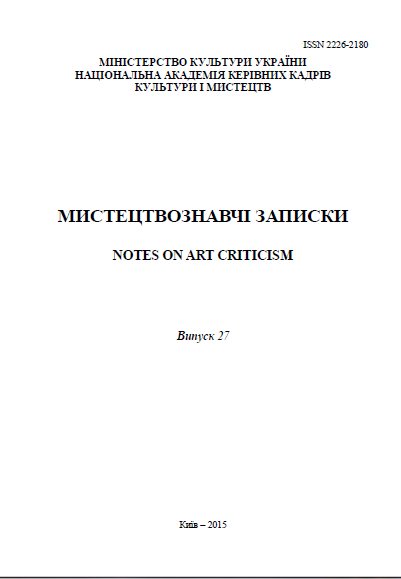Становлення концепту "кодування" в культурі
Formation of concept "coding" in Culture
Author(s): Olena Stalyevna AfoninaSubject(s): Aesthetics, Sociology of Culture, Sociology of Art
Published by: Національна академія керівних кадрів культури і мистецтв
Keywords: culture code; genesis coding; art; artistic practices;
Summary/Abstract: Analysis of the genesis of the encoding process as the art space requires an interdisciplinary approach, based on which systematized the philosophical, aesthetic, cultural, psychological, sociological views on this issue. Existing studies – is mostly general works on the problems of contemporary art and art space; philosophy, art dictionaries and reference books; Special works on issues related to coding. According to the purpose of coding resembles encryption method in cryptography, which has a history of four thousand years. The main objective was to provide information encryption confidential messages. Converting data from the form that is available to each listener / reader to coded-encrypted, it caused the need to maintain confidentiality of messages. Encryption of information used in military, diplomatic, business and espionage cases, ie where ordinary speech (oral or written) was impossible. In ancient Rome it was known Caesar cipher (permutation of letters or groups of letters). In the Arab period in the history of cryptography data encryption engaged scholar al-Kindi, but his method it was similar to the classic permutation cipher. Polyalphabetic cipher, which arose in the Renaissance, linked with the name of Leon Battista Alberti. The invention Alberta was to use different ciphers and scripts for different parts of the message. In modern times, the cipher Vigenère concentrated the information around the keywords. With the emergence of interpretive devices polyalphabetic ciphers remained vulnerable. Since the twentieth century, the practice of encryption includes digital computers and electronic devices.
Journal: Мистецтвознавчі записки
- Issue Year: 2015
- Issue No: 27
- Page Range: 207-217
- Page Count: 11
- Language: Ukrainian

